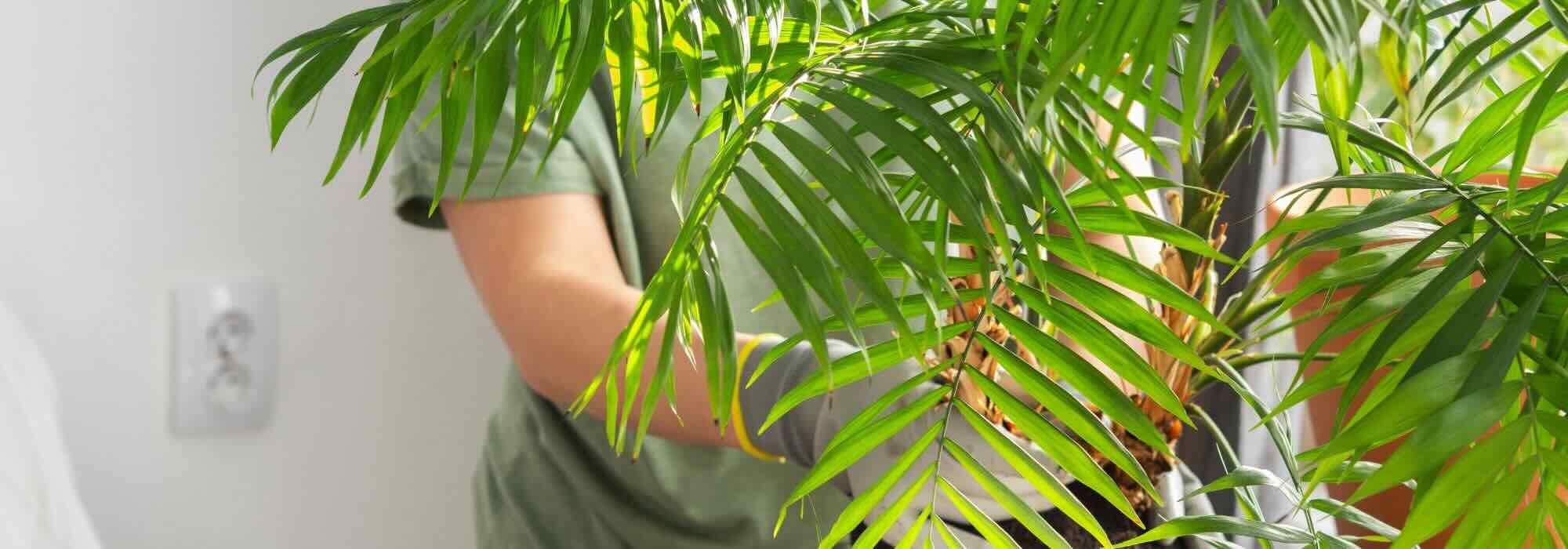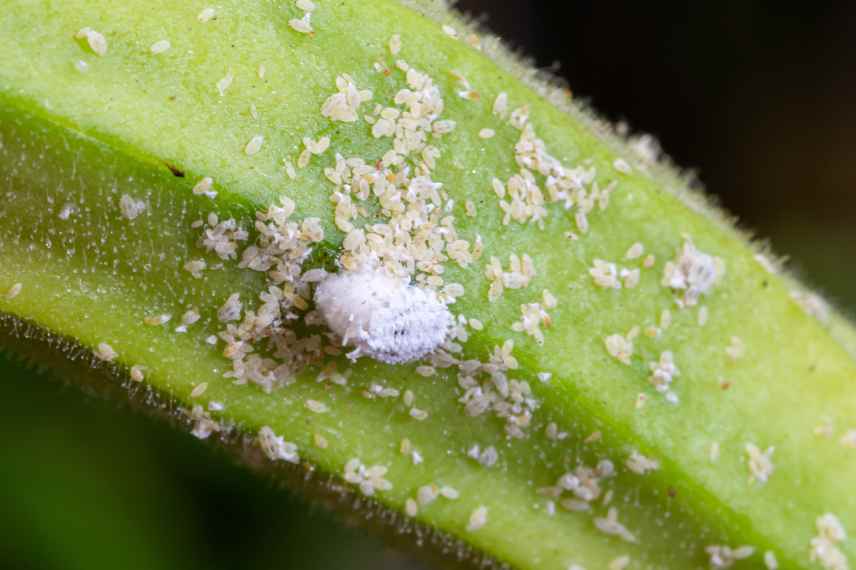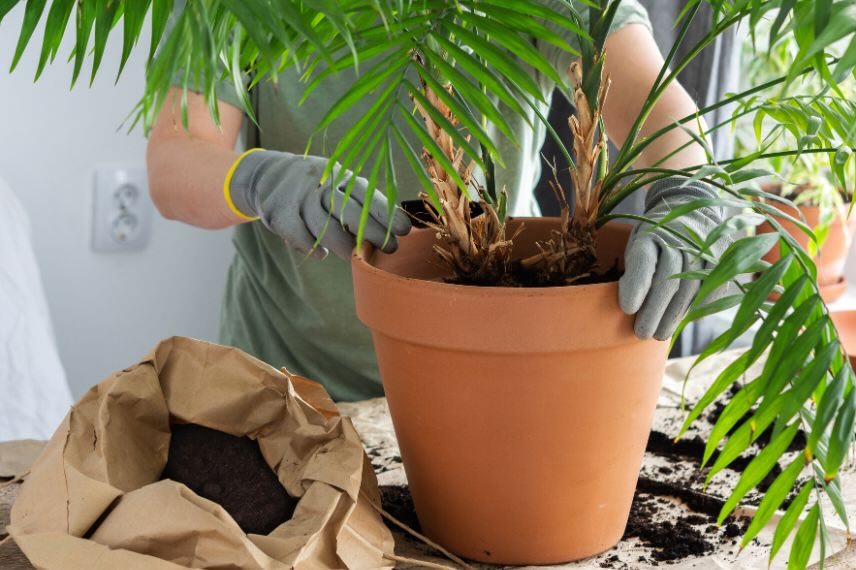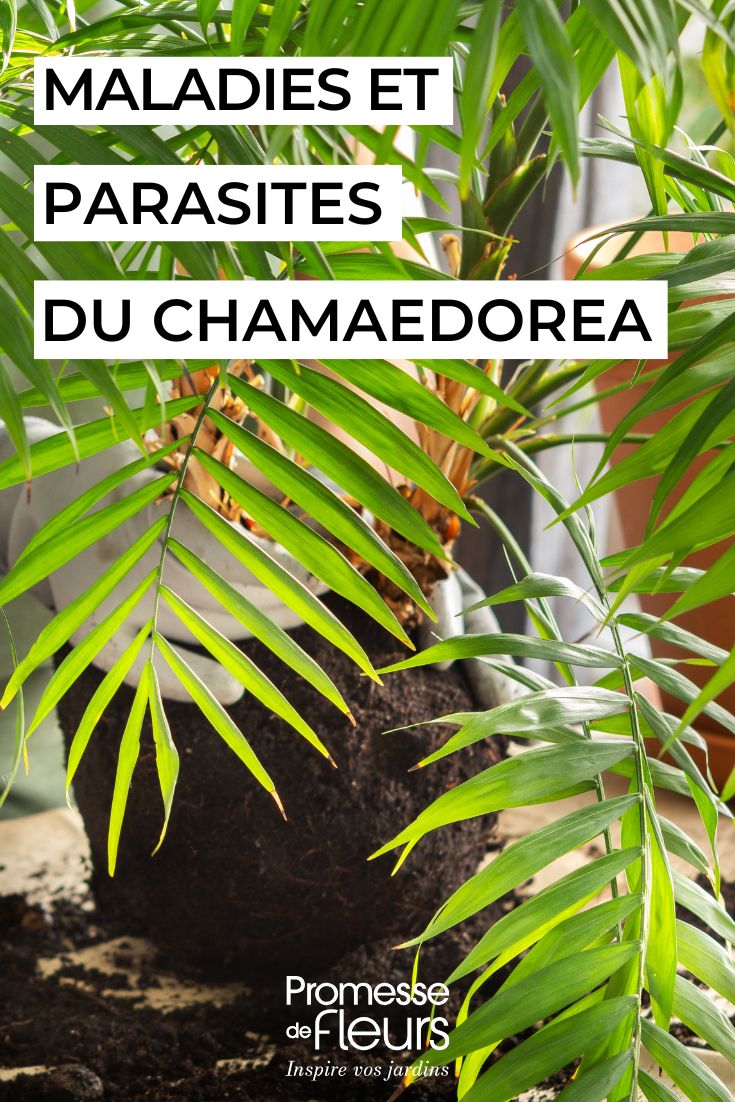
Diseases, parasitic pests, deficiencies: everything that can affect your Chamaedorea
Recognising and Treating the Most Common Problems of Indoor Palms
Contents
The Chamaedorea, also known as parlour palm, dwarf palm or Chamaedorea, is a prized houseplant for its natural elegance, ability to adapt to medium light conditions and relatively simple care. But like all plants, even the hardiest, it is not immune to minor troubles. Parasitic organisms invisible to the naked eye, sneaky fungi, or simple cultivation mistakes can quickly disturb the health of this much-loved palm.
Knowing the main enemies of the Chamaedorea, whether creeping, microscopic or fungal, is essential to react quickly and keep your plant in top condition. Discover in this article an overview of the most common parasites, diseases or problems, with practical advice to identify, prevent and treat them effectively.
Common parasitic pests of Chamaedorea
Spider Mites (Tetranychus or Red Spider Mites)
Spider mites are microscopic parasites often difficult to spot with the naked eye. They manifest through gradual yellowing of leaves and sometimes the appearance of fine silky webbing, especially on the underside of foliage. These tiny arachnids pierce plant cell to feed, causing overall weakening of the plant.
Solutions:
- Start by showering the plant if possible in the bathroom.
- Apply a solution based on black soap and rosemary essential oil.
- Increase ambient humidity (spider mites hate humid environments), using a humidifier or regular misting.
- Introduce beneficial insects like Phytoseiulus persimilis, a predatory mite for red spider mites in case of heavy infestation.
→ Read our article on red spider mites to learn more about treatments.
Mealybugs
Mealybugs appear as small white cottony masses clustered on stems and leaf joints. By feeding on sap, they gradually weaken the plant, causing leaf yellowing and stunted growth.
Solutions:
- Clean infested areas with a cotton bud soaked in 70°C alcohol.
- Spray a diluted black soap solution with 1 teaspoon of the same alcohol and rapeseed oil for a natural treatment.
→ Our article on mealybugs will tell you more.
Aphids
These small insects, often green but sometimes black or brown, cluster on young shoot and tender leaf. They suck sap, causing wilting and deformation of new leaves, and can also transmit viruses.
Solutions:
- Shower the plant if possible in the bathroom to dislodge as many aphids as possible.
- Spray a mixture of water and black soap.
→ Discover all our advice in our specific article on aphids.
Whiteflies
Whiteflies are tiny winged insects that fly away in a white cloud when the plant is touched. They also feed on sap, causing general weakening and honeydew production, a sticky substance promoting sooty mould (a black fungus).
Solutions:
- Place yellow sticky traps around the plant to catch adults. Spray insecticidal soap or neem oil. Remove heavily infested leaves if necessary.
- Spray a mixture of water and black soap with a teaspoon of rapeseed oil on the plant.
- Repeat treatment every 4 to 5 days for two weeks.
- Use beneficial insects in case of heavy infestation.
→ Read our dedicated article for advice on treating whiteflies.
Scale Insects
Unlike mealybugs, scale insects form small hard waxy bumps on stems and leaves. They are often immobile and difficult to remove. By feeding on sap, they cause gradual weakening of the plant, which may show yellowed and wilted leaves.
Solutions:
- Gently scrape off scales with a soft brush dipped in alcohol or remove them with a knife slid between the plant and the scale.
- Try a treatment with 10% alcohol and 2 teaspoons of neem oil diluted in 50cl of water with a few drops of black soap.
Also read our article on mealybugs, treatments are quite similar for all types of scale insects.

Mealybugs are among the most common indoor plant pests
Read also
Chamaedorea: planting, careFungal diseases affecting Chamaedorea
Leaf spots
Leaf spots appear as small circular marks, often brown or black, surrounded by a yellow halo. These spots mainly appear on the oldest fronds or those that remain wet for too long.
This disease is usually caused by excess moisture and poor air circulation around the plant. It is rarely fatal, but it reduces the palm’s aesthetic appeal and can slow its growth if not controlled.
Solutions:
- Remove severely affected leaves.
- Avoid wetting the foliage when watering.
- If you mist the foliage, ensure it doesn’t stay wet for too long.
- Space out plants to improve air circulation.
- Apply an organic copper-based fungicidal treatment if the disease progresses.
Root rot
Root rot is caused by soil fungi such as Pythium or Phytophthora, often linked to overwatering and poor drainage. This is one of the most insidious diseases as symptoms are not immediately visible.
Infected roots turn black, soft and may emit an unpleasant odour. The plant shows signs of distress: leaves yellow, turn brown, and eventually fall off. If left untreated, the palm may die.
Solutions:
- Remove the plant from its pot, cut away black and rotten roots with sterilised tools.
- Repot the plant in a light, high-quality potting mix with good drainage, mixed with perlite, preferably in a terracotta pot if you notice the soil is waterlogged.
- Never let the soil become waterlogged: wait until the top few centimetres of soil dry out between waterings.
- A pot with drainage holes is essential to remove excess water after each watering.
- Empty the saucer or decorative pot of any residual water.

If your Chamaedorea’s leaves show signs of deterioration, check the condition of the roots
Physiological issues that may affect Chamaedorea
Magnesium deficiency
The Chamaedorea may sometimes suffer from a lack of magnesium, an essential nutrient for chlorophyll production. This deficiency manifests as chlorosis: the tips of the leaves gradually turn yellow, while the veins remain green. This symptom is often confused with other deficiencies or diseases, making diagnosis difficult.
The problem usually occurs when the growing medium is poor or unbalanced, or if the plant has been watered exclusively with demineralised water for an extended period. An excess of calcium or potassium in the soil can block magnesium absorption.
Solutions:
- Apply a balanced fertiliser containing magnesium.
- Add Epsom salts (magnesium sulphate) diluted in watering water (approximately 1 tablespoon per 4 litres of water, once a month).
- Take care not to over-fertilise with other elements that could exacerbate the imbalance.
Mineral build-up in tap water
The Chamaedorea is sensitive to the quality of watering water, particularly when it is rich in minerals. In France, tap water may naturally contain calcium (limescale), chlorine and other mineral salts. Over time, these elements can accumulate in the compost, disrupt the plant’s nutritional balance and cause visible symptoms.
The most common signs are dry browning of the leaf tips, giving them a “scorched” appearance, as well as possible whitish deposits on the soil surface. This mineral build-up creates root stress that affects water and nutrient absorption.
Solutions:
- Use rainwater or filtered water to limit chlorine and mineral deposits.
- Flush the compost thoroughly every 2 months to remove excess salts, a process known as leaching the compost.
- Repot the plant every 1 to 3 years depending on the plant’s age and needs, using fresh, well-draining compost.
- Trim affected tips to improve the plant’s appearance, without cutting into healthy tissue.

Repotting your plant every 1 to 3 years as needed (when rootbound or in depleted compost) also helps renew the growing medium
- Subscribe!
- Contents
































Comments